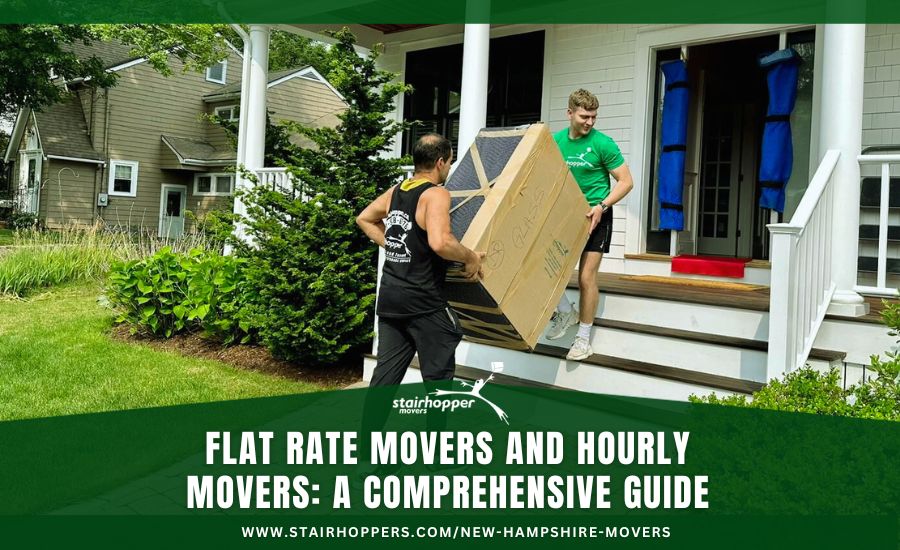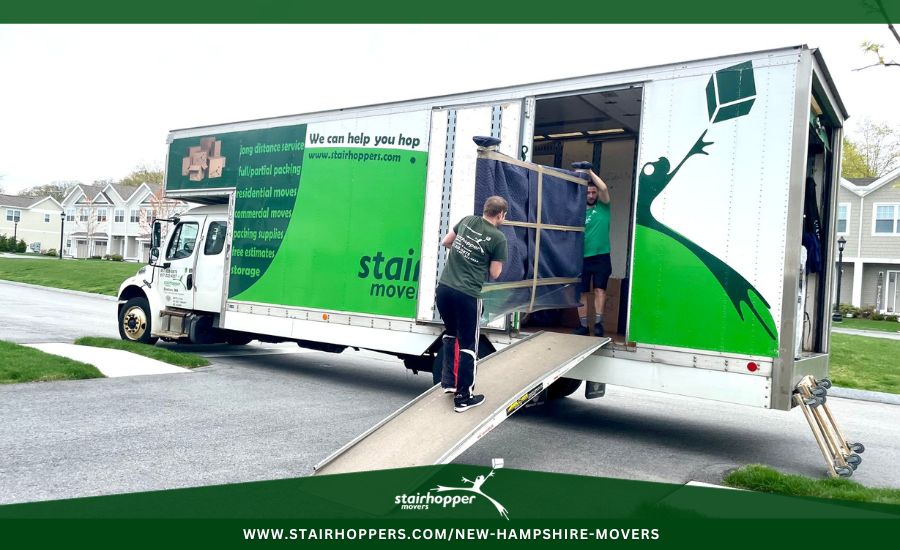Flat Rate Movers and Hourly Movers: A Comprehensive Guide

Choosing between flat rate and hourly movers is a pivotal decision when planning a move. Understanding the nuances of each pricing model can significantly impact the cost, efficiency, and overall experience of your relocation. In this guide, we’ll delve deep into the world of flat rate movers and hourly movers, helping you make an informed choice for your next big move.
What are Flat Rate Movers?
Flat rate movers offer a comprehensive moving solution for a predetermined fee. This model is designed to provide customers with peace of mind, knowing that regardless of the time taken or any unforeseen challenges, the price remains unchanged. This approach is particularly beneficial for those who prefer to budget in advance and avoid any unexpected costs. The flat rate model is based on a detailed assessment of the items to be moved, the distance, and other specific requirements. Once the assessment is complete, the moving company provides a binding quote, ensuring transparency and trust. This method eliminates the stress of watching the clock and allows customers to focus on other aspects of the move. However, as with any service, it’s essential to understand its advantages and disadvantages to determine if it’s the right fit for your needs.
Pros of Flat Rate Moving
Choosing a flat rate moving service comes with several advantages:
- Predictability: One of the most significant benefits is the predictability of costs. You know upfront what you’ll be paying, eliminating any surprises.
- Efficiency: Movers are incentivized to complete the move efficiently since the price is set.
- No Hidden Fees: The price quoted includes all services, ensuring there are no hidden fees or additional charges.
- Optimal for Long-Distance: Flat rate is often preferred for long-distance moves where time estimations can be challenging.
- Stress-Free: Without the need to monitor hours, customers can have a more relaxed moving experience.
Cons of Flat Rate Moving
While flat rate moving offers numerous benefits, there are some drawbacks to consider:
- Potential Overestimation: There’s a chance you might end up paying for more than you need.
- Less Flexibility: Any changes or additional services might come with extra costs.
- Comparative Difficulty: It can be challenging to compare quotes from different companies.
- Limited Services: The quoted price might not cover additional services or special requests.
- Quality Concerns: Some unscrupulous moving companies might compromise on service quality to maximize profits.
What are Hourly Movers?
Hourly movers charge based on the time spent on the moving process. This model is transparent and straightforward, with customers paying for the actual hours worked. It’s a dynamic pricing model that adjusts based on the specific requirements of the move. For instance, if the move is completed faster than anticipated, the customer pays less. Conversely, if there are delays or challenges, the cost might increase. This flexibility can be both an advantage and a disadvantage. While it allows for a tailored approach, it also introduces an element of unpredictability. The final cost can vary based on various factors, including the efficiency of the movers, the volume of items, and any unforeseen challenges.
Pros of Hourly Moving
Hourly moving, with its transparent pricing model, offers several advantages:
- Pay for What You Use: Customers are charged based on the actual hours worked, ensuring fairness.
- Flexibility: This model allows for changes or additional services on the go.
- Easy Comparisons: Comparing quotes from different companies is straightforward.
- Motivation for Care: Movers are incentivized to handle items carefully to avoid delays and increase efficiency.
- Transparency: Customers can monitor the progress and have a clear understanding of the costs.
Cons of Hourly Moving
However, the hourly model isn’t without its challenges:
- Unpredictable Costs: If the move takes longer than anticipated, the costs can escalate.
- Potential Delays: Some movers might not be motivated to work swiftly, leading to increased hours.
- Stress of Monitoring: Customers might feel the need to keep an eye on the clock, adding to the stress.
- Variable Factors: Traffic, weather, and other unforeseen challenges can affect the time and cost.
- Budgeting Challenges: Without a set price, budgeting for the move can be tricky.
Comparing Flat Rate and Hourly Movers
When it comes to choosing between flat rate and hourly movers, there’s no one-size-fits-all answer. The best choice depends on individual preferences, the nature of the move, and budget considerations. Flat rate movers offer predictability and peace of mind, ensuring that the price remains unchanged regardless of the time taken. On the other hand, hourly movers provide flexibility, allowing customers to pay for the actual hours worked. Both models have their merits, and the decision boils down to what aligns best with the customer’s needs. It’s essential to weigh the pros and cons, consider personal preferences, and make an informed decision.
Making Your Move Smooth with Stairhopper Movers – Merrimack
In conclusion, whether you opt for flat rate or hourly movers, the key is to make an informed decision. By understanding the pros and cons of each model, you can choose the best fit for your needs. When you’re ready to make your move, trust in the expertise of Stairhopper Movers’ Merrimack moving team for a seamless transition to your new home.
Frequently Asked Questions
Which is more cost-effective: Flat-Rate Movers or Hourly Movers?
The cost-effectiveness of flat rate versus hourly movers depends on various factors. For shorter, local moves, hourly rates might prove more economical due to the reduced time and straightforward nature of the move. However, for long-distance or complex relocations, flat rates offer predictability, ensuring that there are no unexpected costs. It’s essential to get quotes for both models, compare the services offered, and make an informed decision based on the specifics of the move.
Are hourly rates more common for local moves?
Yes, hourly rates are typically preferred for local moves. Local relocations usually take less time, making the hourly model more economical and transparent. Customers can monitor the progress, and there’s a direct correlation between the time taken and the cost. However, for moves that might be affected by traffic, weather, or other unpredictable factors, some prefer the certainty of a flat rate.
When does flat-rate moving make the most sense?
Flat-rate moving is ideal for situations where predictability and fixed costs are a priority. This includes long-distance moves, relocations involving a large volume of items, or moves in metropolitan areas prone to traffic delays. The flat rate ensures that the price remains unchanged, regardless of any unforeseen challenges, providing peace of mind to the customer.
How long does a typical hourly move take?
The duration of an hourly move varies based on several factors, including the volume of items, the efficiency of the movers, and the distance covered. A well-organized move to a moderately furnished home might take anywhere from 3-4 hours. However, it’s essential to account for potential delays, such as traffic or packing challenges, which can extend the time.
What are the main differences between flat rate and hourly moving?
The primary distinction between flat rate and hourly moving lies in the pricing model. A flat rate offers a single, predetermined fee for the entire move, ensuring predictability and transparency. In contrast, hourly movers charge based on the actual time spent on the move, offering flexibility but also introducing an element of unpredictability. The choice between the two depends on individual preferences, the nature of the move, and budget considerations.


